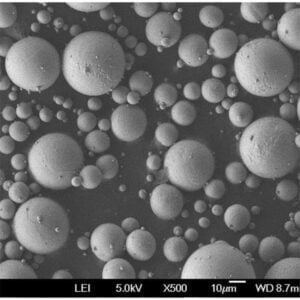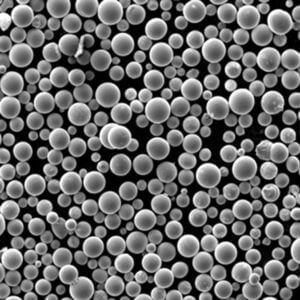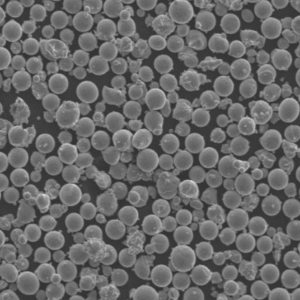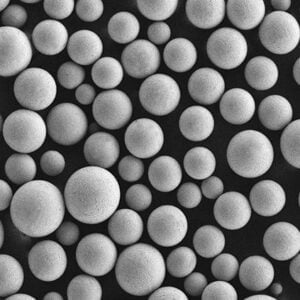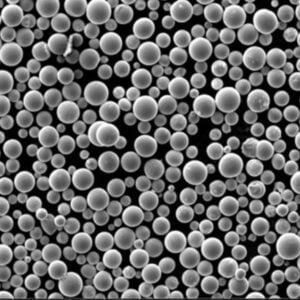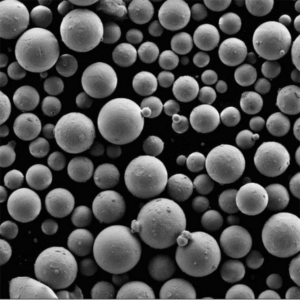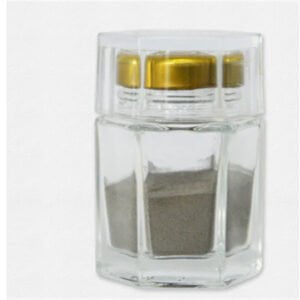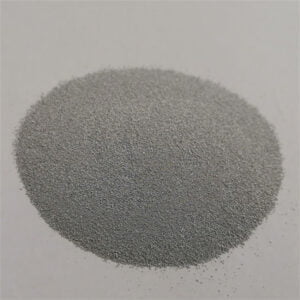Atomizovaný kovový prášek
Obsah
Atomizované kovové prášky se týkají kovových materiálů, jako je hliník, titan, nikl, železo nebo slitiny, které byly redukovány na jemný kulovitý prášek procesem atomizace. Vykazují vysokou čistotu, konzistentní velikosti částic a morfologii prášku ideální pro průmyslové aplikace, jako je vstřikování kovů (MIM) a výroba aditiv.
Tato příručka pokrývá různé typy atomizovaných kovových prášků, výrobní metody, klíčové vlastnosti a charakteristiky, technické specifikace, odhady cen, podrobnosti o dodavatelích a také klady, zápory a běžné často kladené otázky při práci s přesně navrženými atomizovanými kovovými prášky v rámci 3D tisku, vstřikování a dalších výrobních procesů.
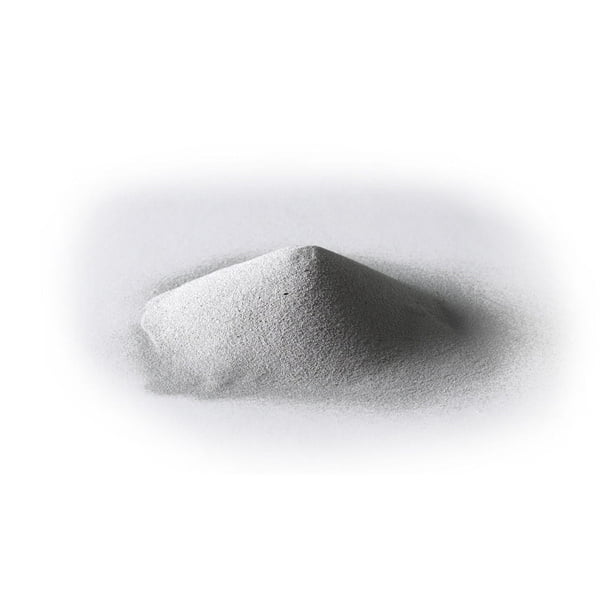
Typy Atomizovaný kovový prášek
Mezi běžné základní kovy a slitiny dostupné jako atomizované sférické prášky patří:
| Materiál | Slitiny | Charakteristika |
|---|---|---|
| Hliník | 6061, 7075, 2024, 7050, | Lehká, střední pevnost |
| Titan | Ti-6Al-4V, Ti 6Al-7Nb | Optimalizovaný poměr pevnosti a hmotnosti |
| Nikl | Inconel 718, Invar 36, Kovář | Možnosti odolné vůči teplu/korozi |
| Nerezová ocel | 316L, 430F, 17-4PH | Varianty s vysokou tvrdostí odolné proti korozi |
| Měď | C11000, mosaz, bronz | Vysoká tepelná a elektrická vodivost |
Pomocí legovacích směsí lze upravit vlastnosti napříč odolností proti korozi, tvrdostí, pevností, tažností, provozními teplotami a dalšími vlastnostmi.
Výrobní metody
| Metoda | Popis procesu | Velikost a morfologie částic | Výhody | Nevýhody | Aplikace |
|---|---|---|---|---|---|
| Atomizace vody | Roztavený kov je protlačován tryskou pod vysokým tlakem a rozlámán na jemné kapičky vysokorychlostním vodním paprskem. Kapičky rychle tuhnou v kontaktu s chladicí vodou za vzniku prášku. | 5 μm – 2 mm; Nepravidelné, často s dendritickými strukturami | – Nejnižší náklady mezi atomizačními metodami – Vysoká rychlost výroby – Vhodné pro širokou škálu kovů | – Vlastnosti prášku mohou být méně jednotné – Drsnější povrchová úprava částic – Potenciál oxidace v důsledku působení vody | – Levné komponenty – Ložiska – Ozubená kola – Filtry |
| Atomizace plynu | Roztavený kov je vytlačován tryskou pod vysokým tlakem do prostředí inertního plynu (obvykle argon nebo dusík). Vysokorychlostní proud plynu rozbíjí proud kovu na jemné kapičky, které rychle tuhnou díky rychlému ochlazení. | 10 μm – 1 mm; Hladké, kulovité tvary | – Vyrábí vysoce kvalitní kulovité prášky – Konzistentní rozdělení velikosti částic – Minimální oxidace | – Vyšší náklady ve srovnání s atomizací vody – Omezený rozsah kovů vhodných pro tento proces | – Aditivní výroba (3D tisk) – Vysoce výkonné komponenty – Letecké díly – Lékařské implantáty |
| Odstředivá atomizace | Roztavený kov je obsažen v rychle rotující formě. Odstředivá síla vrhá roztavený kov směrem ven k okraji formy, kde se vlivem vysokých smykových sil rozpadá na kapičky. Kapky pak tuhnou v řízené atmosféře. | 10 μm – 150 μm; Obecně kulovité, ale mohou mít nepravidelné tvary | – Produkuje jemné prášky – Vhodné pro reaktivní kovy – Minimální znečištění | – Nižší rychlost výroby ve srovnání s jinými metodami – Může se jednat o složitý proces pro řízení | – Prášky pro vstřikování kovů (MIM) – Elektronické součástky – Navařovací materiály |
| Proces plazmové rotující elektrody (PREP) | Odtavná elektroda (obvykle tyč nebo disk) se otáčí vysokou rychlostí a taví se plazmovým hořákem. Odstředivá síla vrhá kapičky roztaveného kovu směrem ven, které rychle tuhnou v prostředí inertního plynu a tvoří prášek. | 10 μm – 100 μm; Vysoce kulovité a čisté | – Produkuje vysoce čisté sférické prášky – Vynikající pro reaktivní kovy – Přísná kontrola distribuce velikosti částic | – Velmi vysoké náklady – Omezená výrobní kapacita | – Vysoce výkonné letecké komponenty – Lopatky turbín – Lékařské implantáty |
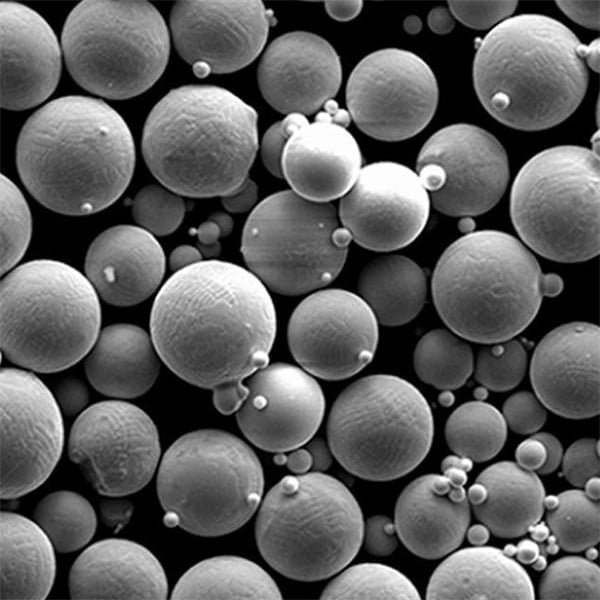
Vlastnosti atomizovaných kovových prášků
Výhody těchto přesně tvarovaných a dimenzovaných kovových mikrokuliček:
| Vlastnictví | Charakteristika | Výhody |
|---|---|---|
| Řízená velikost částic | Většina prášku v úzkém rozmezí 5-45 mikronů | Optimalizovaný průtok a balení pro konzistenci slinování |
| Vysoká sféricita | Práškové kuličky mají velmi kulatý tvar s hladkým povrchem | Zlepšuje konečnou hustotu a kvalitu povrchu |
| Důsledná chemie | Precizně formulované slitiny během výroby | Spolehlivý materiálový výkon šarže od šarže |
| Vysoká čistota | Inertní zpracování bez kontaminace | Nezbytné pro biokompatibilní implantáty a elektroniku |
| Upravené povrchy | Lze přidat nátěry nebo maziva | Zlepšuje tok prášku a snižuje riziko spékání |
Tyto prášky představují ideální suroviny tvarované nejmodernějšími výrobními prostředky, které umožňují nově vznikajícím výrobním technikám přetvářet průmyslovou výrobu napříč sektory prostřednictvím zvýšené přesnosti.
Aplikace z Rozprašované kovové prášky
Hlavní použití přesných sférických kovových prášků:
| Průmysl | Aplikace | Výhody |
|---|---|---|
| Aditivní výroba | 3D tištěné letecké, automobilové, lékařské díly | Vynikající tekutost díky mechanismům nanášení jemného prášku a přetírání |
| Vstřikování kovů | Malá komplexní série dílů pro drony, roboty, turbíny | Vysoká čistota a konzistentní chemie poskytuje spolehlivý výkon materiálu |
| Elektronické obaly | Obvody, senzory, konektory | Slinuté porézní struktury napomáhají miniaturizaci a zároveň umožňují infiltraci funkčního materiálu |
| Tepelné stříkání | Ochranné antikorozní nátěry na mosty, potrubí | Husté povlaky s optimalizovanou morfologií částic |
| Prášková metalurgie | Samomazná ložiska, filtry, magnety | Výroba sítě a tvaru téměř sítě zjednodušuje výrobní kroky |
Přesné částicové inženýrství za atomizovanými prášky v kombinaci se specializovanými procesními znalostmi odemyká inovativní výrobní inovace v těchto klíčových sektorech.
Specifikace
| Standard | Definice | Společné hodnoty |
|---|---|---|
| ASTM B214 | Sítová analýza pro procenta horní hranice částic | -325 mesh = méně než 45 mikronů |
| ASTM B822 | Zdánlivá hustota g/cm3 | Kolem 35-50% jako sypký prášek |
| ASTM B964 | Průtok sekund/50g | Rozsah 15 – 25 sekund |
| ASTM F3049 | Obsah chemických inkluzí max. limity ppm | Fe 300 ppm, O 1500 ppm, N 100 ppm |
Mezinárodní specifikace pomáhají stanovit konzistentní základní linie definující přijatelné prahové hodnoty kvality materiálu a čistoty pro správný výkon prášku během nakládání a slinování napříč různými výrobními technikami.
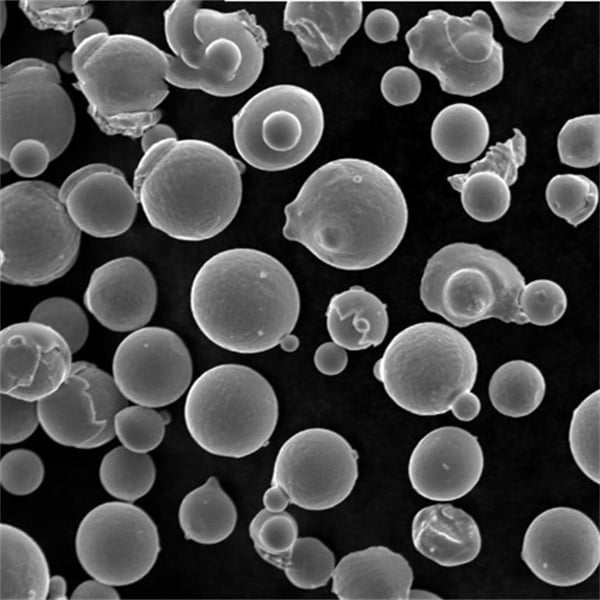
Dodavatelé a ceny
| Kov | Typické aplikace | Renomovaní dodavatelé (globální) | Cenové rozpětí (USD za kilogram) | Klíčové úvahy |
|---|---|---|---|---|
| hliník (Al) | – Aditivní výroba – Tepelný nástřik - vstřikování kovů (MIM) | – Höganäs AB (Švédsko) – AP Powder Company (USA) – AMETEK Inc. (USA) | $1 – $10 | – Čistota (ovlivňuje vodivost a reaktivitu) – Velikost a distribuce částic (vлияет (vliyaniyet) na tekutost a hustotu balení) – Morfologie povrchu (ovlivňuje výkon v AM) |
| titan (Ti) | – Letecké díly (např. lopatky turbíny) – Biomedicínské implantáty – Vysoce výkonné sportovní zboží | – ATI (Allegheny Technologies Incorporated) (USA) – BHP (Broken Hill Proprietory) (Austrálie) – POLEMA (Německo) | $50 – $300 | – jakost (komerčně čistá, legovaná) – Obsah kyslíku (kritický pro některé aplikace) – Minimální objednané množství (MOQ) může být vysoké |
| nikl (Ni) | – Elektronické součástky (např. kondenzátory) – Katalyzátory – Elektrody baterie | – AMI Metals (UK) – Sumitomo Metal Industries (Japonsko) – China Nonferrous Metal Mining Group (Čína) | $10 – $200 | – Chemické složení (přítomnost nečistot) - tekutost (důležitá pro zpracování) – Země původu (může ovlivnit dodací lhůty a předpisy) |
| železo (Fe) | – Součásti pro práškovou metalurgii (např. ozubená kola) – Přídavné materiály pro svařování – Třecí materiály (např. brzdové destičky) | – Hoeganaes AB (Švédsko) – Höganäs Belgium NV (Belgie) – GKN prášková metalurgie (Německo) | $1 – $5 | – Zdánlivá hustota – Stlačitelnost (ovlivňuje vlastnosti finálního dílu) – Snížení oxidů (zlepšuje výkon) |
| Kobalt (Co) | – Tvrdonávarové slitiny - Řezné nástroje – Magnetické komponenty | – Höganäs AB (Švédsko) – Hunan Shunkang Technology Co., Ltd. (Čína – Sandvik AB (Švédsko) | $150 – $300 | – Distribuce velikosti částic ( влияет (vliyaniyet) při balení a slinování) – Sféricita (vлияет (vliyaniyet) na tekutost) – Obsah vlhkosti (může ovlivnit zpracování) |
| měď (Cu) | – Elektrické vodiče – Chladiče – Pájecí slitiny | – AMETEK Inc. (USA) – Carpenter Technology Corporation (USA) – JX Nippon Mining & Metals Corporation (Japonsko) | $5 – $20 | – Obsah kyslíku (může ovlivnit vodivost) – Povrchová plocha ( влияет (vliyaniyet) na reaktivitu) – Morfologie ( влияет (vliyaniyet) na hustotě balení) |
Výhody a nevýhody
| Klady | Nevýhody |
|---|---|
| Vynikající morfologická kontrola díky nejmodernějším výrobním metodám | Potenciálně vysoké ceny materiálu, zejména u vysoce přizpůsobených slitin |
| Odemyká rušivé techniky výroby dílů, jako je tryskání pojiva a aditivní tisk DED | Omezená velká objemová kapacita ve srovnání s konvenční kovovýrobou, jako je lití a kování |
| Zjednodušuje následné operace díky vysoké čistotě a tekutosti | Vyžaduje odborné znalosti a bezpečnostní opatření, aby se předešlo rizikům oxidace |
| Rozšiřuje řadu slitin přizpůsobených náročným aplikacím | Kolísání dodavatelského řetězce, protože specializovaní výrobci vyvažují malé šarže |
| Umožňuje složité geometrie nemožné pomocí subtraktivních technik | K dosažení konečných vlastností materiálu je často zapotřebí dodatečné zpracování |
Přesná kontrola nad tvarem, velikostí, distribucí a chemií prášku přináší obrovské výhody, ale je třeba věnovat pozornost specializované manipulaci a zpracování.
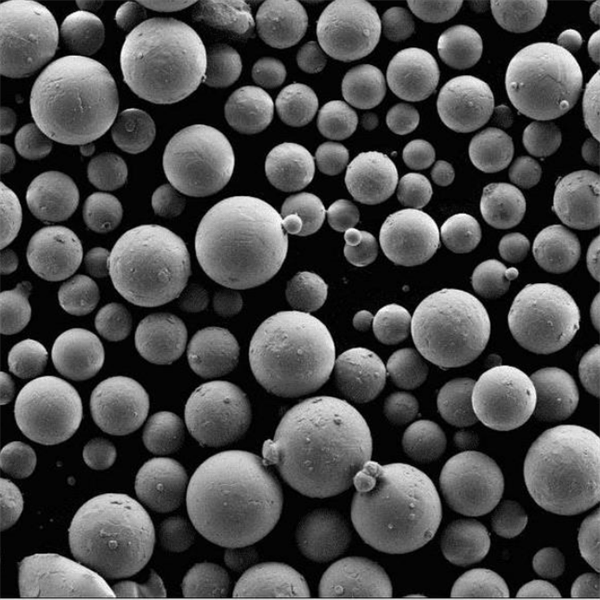
Omezení a úvahy
| Aspekt | Omezení/zohlednění | Dopad | Strategie zmírňování dopadů |
|---|---|---|---|
| Charakteristiky částic | Rozložení velikosti částic: Široká distribuce velikosti může vést k nerovnoměrné hustotě balení a ovlivnit vlastnosti konečného produktu. | Nekonzistentní vlastnosti materiálu, možnost defektů. | Použijte klasifikační techniky k dosažení užšího rozsahu velikostí. Optimalizujte parametry atomizace pro lepší kontrolu. |
| Morfologie částic: Nepravidelné nebo nekulovité částice mohou bránit tekutosti a účinnosti balení. | Snížená tekutost prášku, potíže při dosahování vysoké hustoty plnění. | Implementujte tvarovací procesy, jako je atomizace plynu pro kulovitější tvary. Optimalizujte parametry atomizace, abyste minimalizovali fragmentaci částic. | |
| Plocha povrchu: Velký povrch v důsledku jemných částic může zvýšit reaktivitu a náchylnost k oxidaci. | Absorpce vlhkosti, snížená trvanlivost prášku, možnost degradace materiálu. | Udržujte suché, inertní skladovací prostředí. Při manipulaci provádějte opatření na kontrolu vlhkosti. Zvažte použití kyslíkových getrů ve skladovacích nádobách. | |
| Vlastnosti materiálu | Oxidace: Rychlé ochlazení během atomizace může zachytit oxidy v částicích nebo vytvořit vrstvu oxidu na povrchu. | Snížená tažnost, změněné mechanické vlastnosti, možnost vnitřních defektů. | Použijte atomizaci inertním plynem k minimalizaci expozice kyslíku. Implementujte techniky následného zpracování, jako je deoxidace, abyste odstranili oxidy. |
| Zbytková pórovitost: Vnitřní dutiny v částicích mohou ovlivnit pevnost a odolnost proti únavě. | Snížený mechanický výkon, potenciál pro iniciaci trhlin. | Optimalizujte parametry atomizace, abyste minimalizovali zachycený plyn. K uzavření poréznosti použijte konsolidační techniky, jako je izostatické lisování za tepla (HIP). | |
| Mikrostruktura: Rychlé tuhnutí může mít za následek nerovnovážné mikrostruktury s potenciálně škodlivými účinky. | Snížená pevnost, houževnatost a odolnost proti korozi. | Ovládejte rychlost chlazení během atomizace, abyste podpořili požadované mikrostrukturální vlastnosti. Pro zpřesnění mikrostruktury implementujte techniky následného zpracování, jako je žíhání. | |
| Manipulace a zpracování | Tekutost: Špatná tekutost může bránit účinnému dávkování prášku v aditivních výrobních procesech. | Nekonzistentní usazování prášku, možnost narušení procesu. | Používejte látky zvyšující tekutost nebo lubrikanty. Optimalizujte velikost a tvar částic pro lepší průtokové vlastnosti. |
| Bezpečnost: Jemné kovové prášky mohou být za určitých podmínek hořlavé nebo výbušné. | Nebezpečí požáru nebo výbuchu při manipulaci a skladování. | Proveďte řádné manipulační postupy, včetně řádného uzemnění a ventilace. Prášky skladujte na bezpečném místě mimo zdroje tepla a zápalné zdroje. | |
| Dopad na životní prostředí: Výroba a manipulace s kovovými prášky může vytvářet prach a potenciální znečištění životního prostředí. | Obavy ze znečištění ovzduší a vody. | Během atomizace implementujte systémy sběru prachu. Používejte uzavřené systémy pro manipulaci s práškem, abyste minimalizovali dopad na životní prostředí. |
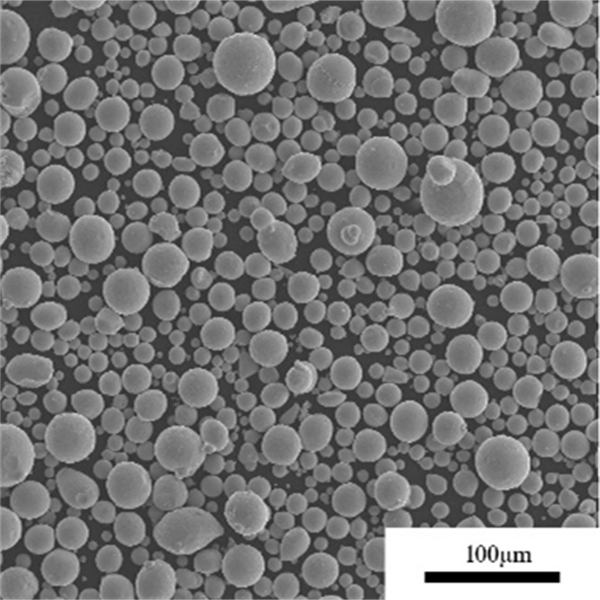
FAQ
| Otázka | Odpovědět |
|---|---|
| Jaká je hlavní výhoda oproti kovovému prášku atomizovanému vodou? | Přesnější kontrola nad tvarem částic a konzistencí distribuce velikosti |
| Jaká je typická objemová hmotnost? | Běžné je kolem 2-4 g/cc v závislosti na velikosti slitiny a částic |
| V čem se měří průtok? | Sec/50 g udává morfologický průtok prášku zařízením |
| Jaké testování velikosti částic se používá? | Laserové difrakční analyzátory velikosti částic v kapalných suspenzích |
| Jak se testuje chemie? | Metody ICP-OES nebo GDMS používané k validaci elementárních složení |
| Má prášek neomezenou trvanlivost? | Obecně více než 5 let, pokud je uchováván utěsněný před kyslíkem/vlhkostí, test opakujte po 2-3 letech |
| Jaká opatrnost je potřeba při manipulaci? | Ochranné rukavice pro inertní prostředí pro titan, vhodné OOP pro ostatní reaktivní kovy |
| Jaké jsou běžné aplikace? | MIM, Binder jetting a DED AM jsou v současné době předními způsoby použití |
Správná manipulace a testovací procesy v kombinaci s odpovídajícími požadavky zákaznických aplikací povedou k pokračujícímu zavádění technologie atomizace ve výrobě kovových dílů.
Závěr
Pokročilá výrobní schopnost potřebná k hromadné výrobě precizně zpracovaných kovových mikrokuliček otevírá obrovské možnosti výroby napříč průmyslovými odvětvími. Využitím procesů, jako je atomizace plynu k řízení kritických charakteristik prášku, jako je distribuce velikosti částic, tvar, čistota a chemie, mohou inženýři plně využít nově vznikajících technik, jako je aditivní výroba, ke zjednodušení výrobních toků. A specializované varianty slitin rozšiřují konstrukční obálku v náročných provozních prostředích s teplotou, tlakem a žíravinami. Zkombinujte to s nižším odpadem ve srovnání s obráběcími procesy a zjednodušenou logistikou díky prodloužené skladovatelnosti kovových prášků a inovativní podniky právě začínají využívat potenciál prostřednictvím zvýšených investic do výzkumu a vývoje přizpůsobených potřebám aplikací. Ale správné zacházení a bezpečnostní úvahy týkající se reaktivních elementárních prášků zůstávají povinné. Vzhledem k tomu, že aditivní výroba pokračuje ve své růstové trajektorii směrem k certifikované výrobě v plném rozsahu napříč leteckým průmyslem, lékařskou implantací a automobilovými inovátory, očekávejte, že přesná atomizační technologie bude hrát klíčovou roli při zásobování surovinami, které odliší přední výrobce díky přístupu k přizpůsobeným, kvalifikovaným slitinám.
Sdílet na
MET3DP Technology Co., LTD je předním poskytovatelem řešení aditivní výroby se sídlem v Qingdao v Číně. Naše společnost se specializuje na zařízení pro 3D tisk a vysoce výkonné kovové prášky pro průmyslové aplikace.
Dotaz k získání nejlepší ceny a přizpůsobeného řešení pro vaše podnikání!
Související články

Vysoce výkonné segmenty lopatek trysek: Revoluce v účinnosti turbín díky 3D tisku z kovu
Přečtěte si více "O Met3DP
Nedávná aktualizace
Náš produkt
KONTAKTUJTE NÁS
Nějaké otázky? Pošlete nám zprávu hned teď! Po obdržení vaší zprávy obsloužíme vaši žádost s celým týmem.

Kovové prášky pro 3D tisk a aditivní výrobu
SPOLEČNOST
PRODUKT
kontaktní informace
- Město Qingdao, Shandong, Čína
- [email protected]
- [email protected]
- +86 19116340731






